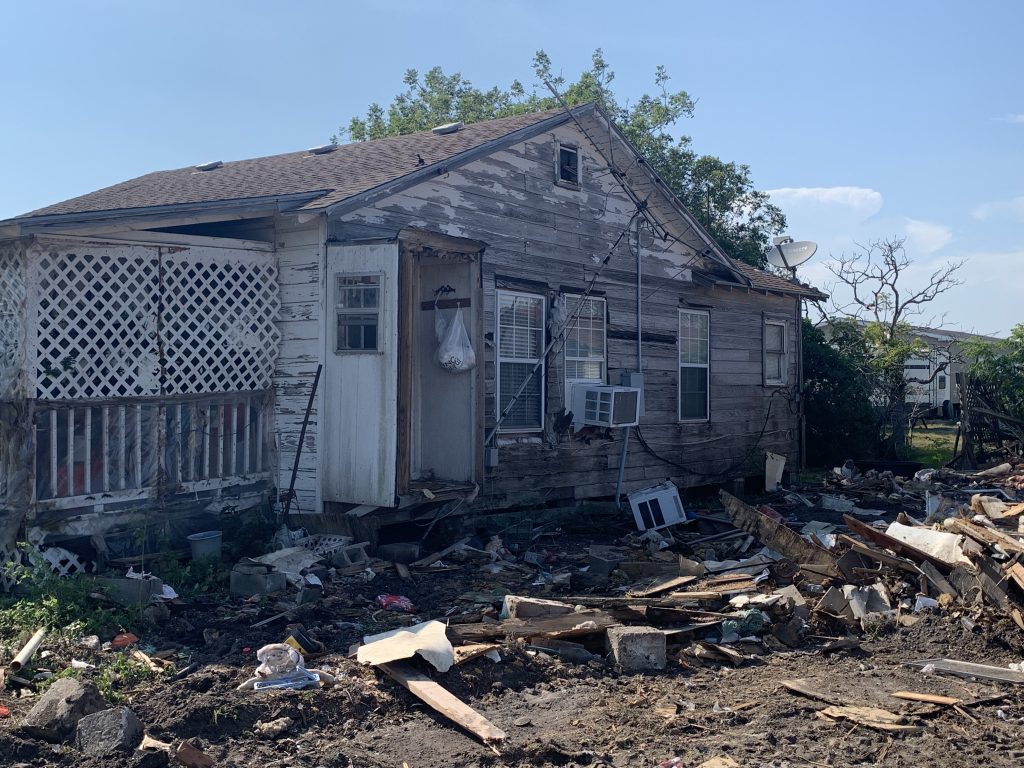
Who is COASTAL BEND DISASTER RECOVERY GROUP?
Coastal Bend Disaster Recovery Group (CBDRG), established in 2015, is a network of business, non-profit, faith-based and government organizations partnering to support long-term disaster recovery efforts in the 11 county region of the Coastal Bend. CBDRG aids disaster survivors with long-term recovery by providing case management services, construction or home repair assistance, volunteer and household donations coordination, and spiritual/emotional care.
What Area Do We Cover?
Texas Coastal Bend Region
Aransas County
Bee County
Brooks County
Duval County
Jim Wells County
Kenedy County
Kleberg County
Live Oak County
Nueces County
Refugio County
San Patricio County
City of Corpus Christi

“Because disasters do not stop at County lines”
Our Mission
To strengthen regional long-term recovery by addressing and jointly resolving unmet, disaster-related needs of individuals in the community.
Our Vision
CBDRG aids disaster survivors with long-term recovery by providing case management services, construction or home repair assistance, volunteer and household donations coordination, and spiritual/emotional care while following the four Cs (communication, coordination, collaboration, and cooperation).


Who Receives Assistance
from CBDRG?
Our clients include homeowners who are considered low income or socially vulnerable (elderly, single head of household with minor children, disabled, honorably discharged US Veterans) who lack some or all the resources to recover on their own. CBDRG, through Case Management, helps the client develop a recovery plan, and organizes the volunteers, materials and supplies need to assist them in their disaster related recovery.
h
What is a Unmet Need?
An Unmet Need is a basic (safe, sanitary & secure) need that is disaster related and the survivor is unable to obtain because they lack either part or all of the resources to obtain.


CBDRG Organization Departments
A holistic approach to Long-Term Recovery
- CASE MANAGEMENT
- CONSTRUCTION
- UNMET NEEDS ROUNDTABLE
- DONATIONS & VOLUNTEER MANAGEMENT
- GRANTS & FUNDRAISING
- COMMUNICATION & PUBLIC RELATIONS
- SPIRITUAL & EMOTIONAL CARE
Disaster Case Management
CBDRG obtains its clients through 2-1-1, referrals from governmental and non-governmental organizations, word of mouth and outreach.
- Long-Term Recovery starts and stops with Disaster Case Management.
- Survivors are vetted to ensure they meet criteria, prevent waste and duplication of benefits.
- Case Managers help the Survivor come up with a recovery plan. All options are exhausted prior to Unmet Needs.
- Disaster Case Managers set the expectations with the survivor.
- To make sure the survivor understands that it is their recovery and it starts and ends with them.
- Wants vs. Needs – CBDRG is focused on helping the client achieve their Unmet Needs not their wants. A need might be fixing the leaking roof. A want might be a new TV.
- A new normal – Due to the nature of disasters some things might be different. A survivors home might be replaced and the history with the old home is lost.
- The use of volunteer labor – In an effort to stretch our dollars further we use volunteer labor when ever possible. While volunteer labor has the passion it may take long to complete the repair due to the sporadic nature of volunteerism.
- Limited Funds – In an effort to help as many people as possible CBDRG focuses on the basics only. The rest of the recovery is up to the survivor.
Construction Management
Construction Management ensures that construction is effective, efficient, and timely, and that quality workmanship meets code requirements. Consider the following, keeping in mind that each state or local community may have additional laws and regulations that exceed the International Residential Code (IRC):
- Local zoning restrictions and Building codes – all construction must meet local codes
- Hazardous material – repair, removal, and/or disposal of lead, asbestos, and mold
- Resiliency & Mitigation – houses should be better prepared to withstand a future disaster
- Floodplain levels – houses must be elevated above the local floodplain levels
- While houses must be safe, sanitary, and secure, repairs and rebuilds should be cost-effective
- Volunteer labor vs. contractors – who will do the work and how will it be supervised?
- Orders building materials in anticipation of volunteers arrivals to work
- Special needs of clients
- Discerning between disaster caused damage vs deferred maintenance

Unmet Needs Roundtable

Cases are presented to Unmet Needs Roundtable only after all other options have been exhausted for the survivor’s recovery. Unmet Needs is the survivor’s last chance for help..
- Unmet Needs Roundtable is a Coalition of the Willing that brings donors, funders, peoplepower, and other resources to one table to coordinate a survivor’s recovery.
- Why do funders and organizations need to Cooperate and Coordinate RESTRICTIONS & LIMITATIONS.
- Each organization brings its own uniqueness and expertise. Coordination between agencies can be leveraged to improve the quality & efficiencies of response.
CBDRG General Meetings help to collaborate and communicate up-to-date information, organize volunteers, bring in targeted resources and money, and capture the story of your community’s disaster. This ensures that you can recover together, gather valuable information, and apply what is learned throughout the recovery process to the community’s overall resilience for future disasters. General Meetings can break into subcommunities (Volunteer, Donations, Case Management and Construction) to have more specific details.